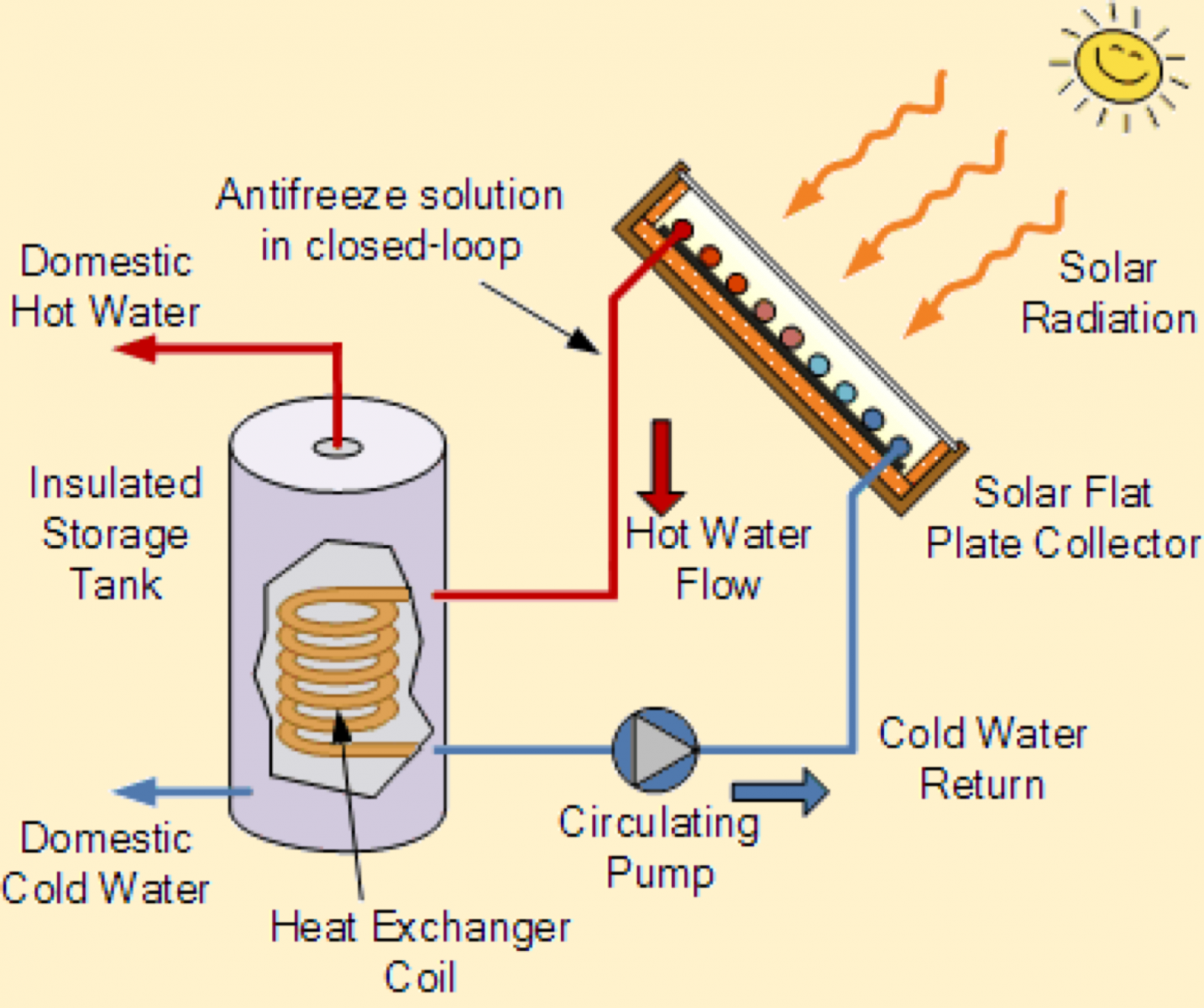At VESR sustainability is a key piece in operations. With funding from UCSB’s The Green Initiative Fund (TGIF) the Valentine Eastern Sierra Nevada Reserve installed an indirect solar hot water system in 2017 for the dormitory facility at SNARL. This project helps to provide hot water to dorm residents by utilizing SNARL’s highly consistent sun exposure to mitigate nonrenewable energy usage. The indirect solar hot water system is a closed-loop system and is likely to be more efficient than other solar hot water heating systems. These systems are active as they require pumps to circulate the heat transfer liquid in order to heat up the water. Overall, the indirect solar hot water system is a valuable piece of SNARL’s facility.
How does the indirect solar hot water system work?
Rather than using a heat exchanger that is separate from the solar flat plate collector, indirect hot water systems use pumps to circulate the heat transfer liquid around the closed-loop system from the collector to heat the exchanger. A copper coil in the storage tank or a flat plate exchanger outside of the plate collects the heat from the heat transfer antifreeze solution to heat up the water in the tank. This transfer liquid antifreeze solution in which indirectly heats the water permits year-round operation when temperatures drop below freezing. The nature of a closed-loop system as such allows for an easy conversion to solar heating with an addition of a flat plate and the ability for an easy installation location feasibility.
 Tips to Maximize Efficiency
Tips to Maximize Efficiency
- Limit shower time
- Reduce overall water use
- Show and wash dishes later in the day
- Avoid morning showers

This project was funded by The Green Initiative Fund UC Santa Barbara.


1d79.jpg?itok=r85TLO8b)